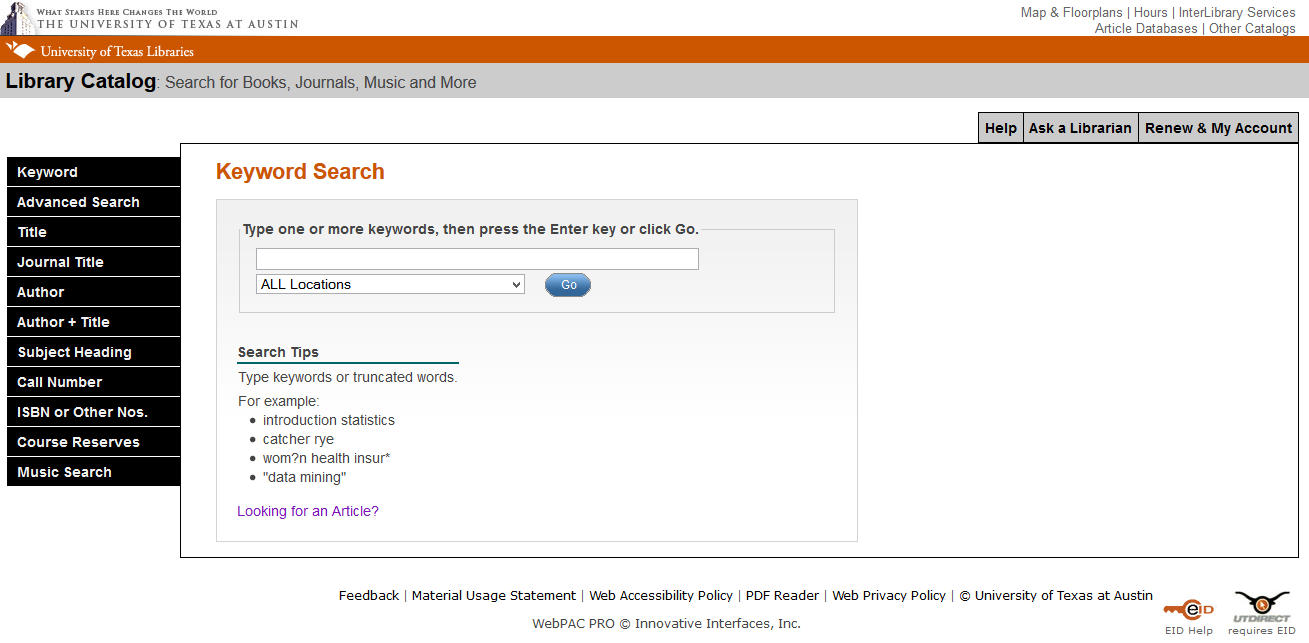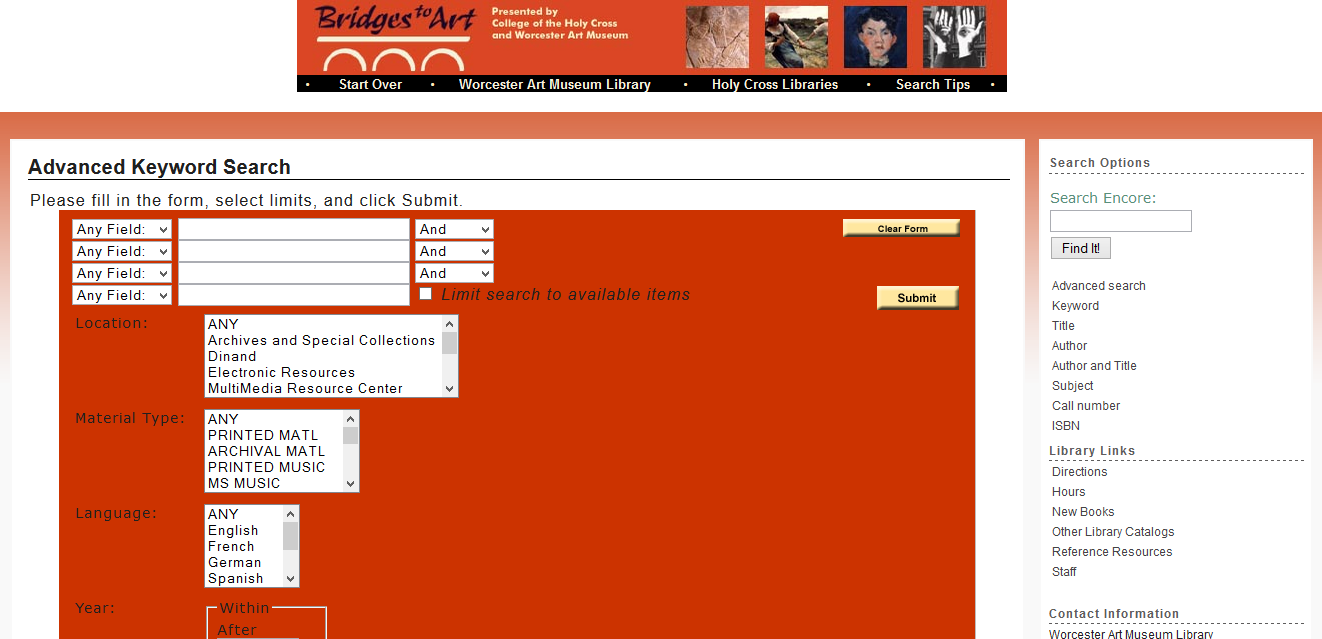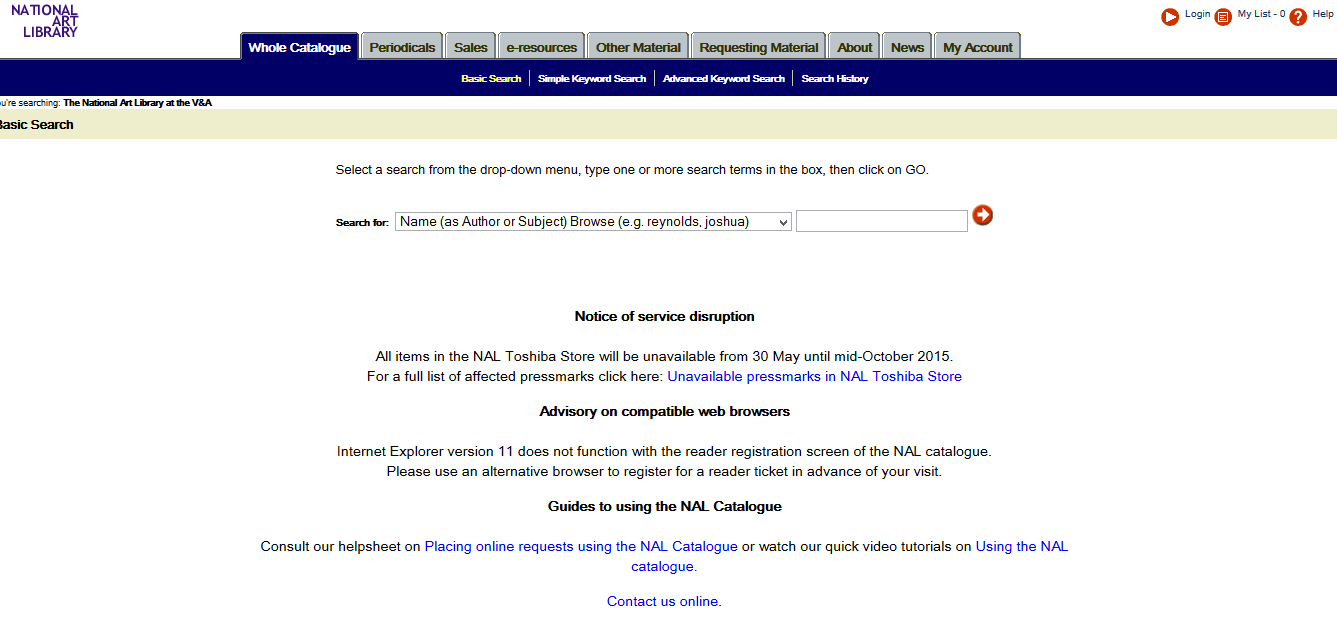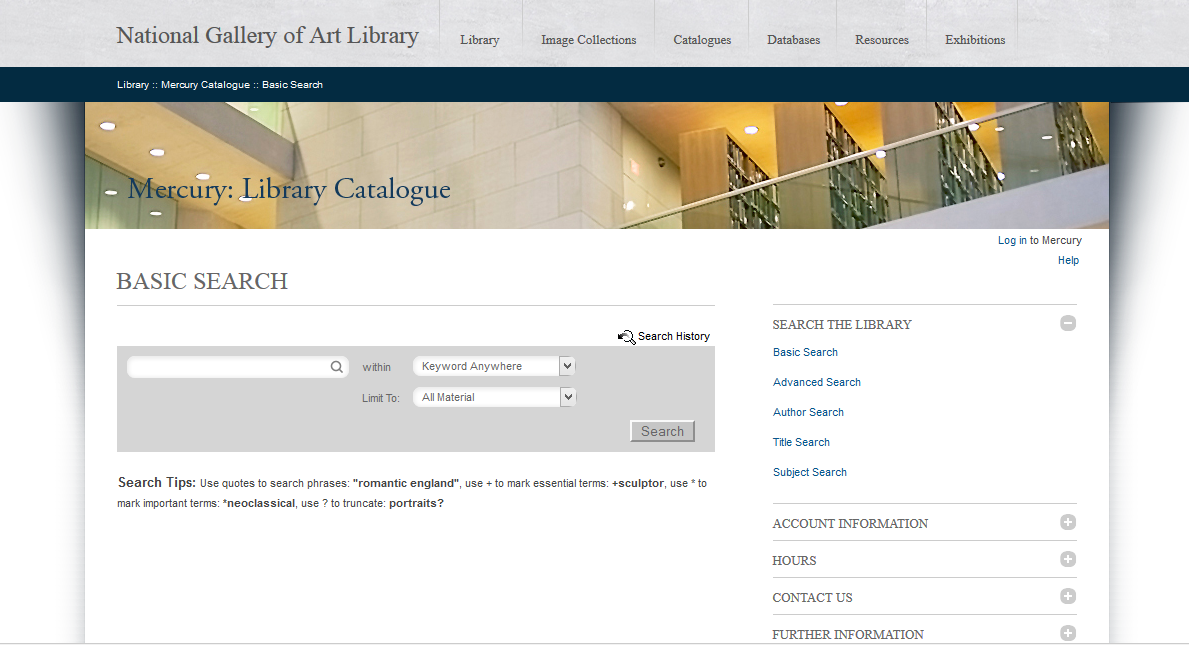WHAT IS IT?
Online catalogs (also known as “online library catalogs” or
“online public access catalogs”) are electronic bibliographic databases
describing the entirety of the library’s collections (“What is an online
library catalog?”). Along with being a
natural response to the digitization of the field, gradually coming to replace the
library card catalog of old, online catalogs also address accessibility issues
by granting users the opportunity to search through a library’s holdings
without having to be on site.
Gary S. Lawrence (1986) describes online catalogs as having
three parts:
- A bibliographic database, and provisions for its management
- A telecommunications system, which links the user to the database and to other aspects of the online catalog system
- A user interface, consisting of the means by which the user controls the catalog and the catalog responds to the user (p. 1)
During the early days of online catalogs (around the 1960s
and 1970s), many started out as circulation systems or local processing
systems, and the public access feature was added later (Yee and Layne,
1998). According to Christine L. Borgman
(1996), the first large-scale implementation of online catalogs occurred during
1975 at Ohio State University and 1978 at the Dallas Public Library.
WHY SHOULD WE CARE?
Online catalogs provide users with convenient and sometime
instantaneous access to the library’s collection. As the field turns more
towards digitization, an online presence is not only beneficial but
necessary. It opens the library to a
larger community, expanding its reach, and provides another avenue for
statistical gathering.
Joseph R. Matthews (1985) describes this increase in access
as being provided with:
- Additional access points beyond the traditional author, title, and subject indexes for the library’s collection is now searchable
- Hours of availability (users are able to search the database during closed hours)
- Insight into the bibliographic information of a library’s catalog, which will improve the user’s ability to effectively research and utilize the library’s collection
Online catalogs also encourage
and facilitate the expansion of electronic publishing and digital-born
material, which benefit libraries in many ways:
- Relieve storage problems
- Give patrons in smallest/most remote libraries timely access to world information
- Users could pursue their interests across disciplines, types of materials and geographic locations
- Having the actual text of many materials available online would finally allow users to find information, rather than find locations to materials that may or may not contain the information being sought. This, more than any other single factor, will revolutionize the way people do research. (Fayen, 1983, p. 108)
WHO ARE THE PRIMARY USERS?
The wonderful thing about online catalogs is how it opens up
the library to a broader spread of users.
Anyone with a personal device that enables internet connection can
access the online catalog and make use of the library’s database, regardless of
proximity. The primary users of an
online catalog would then mirror the primary users of that particular library
(in this case: students, researchers, curators, staff/docents, faculty, etc.)
along with patrons who may not be directly affiliated with the institution
(such as: patrons of another library utilizing interlibrary loans, researchers
in need of electronically published text).
IMPORTANT ISSUES
Perhaps the most enduring issue
with online catalogs is that of usability.
Thomas A. Peters (1991) describes the issue into the following categories:
user behavior problems, user conceptual and attitudinal problems, system
problems, and others.
User behavior problems
- Users type more than is required or necessary for the system to run an efficient and effective search
- Underutilization of advanced features
- High failure rates
- Truncation confusion
- Low persistence/early session termination
User conceptual and attitudinal
problems
- Users have a problem conceptualization the scope of online catalogs
- Controlled subject vocabularies
- Users don’t often have an understanding of the purpose of authority files
- The syndetic structure of online catalogs may be less user friendly than those of card and book catalogs
- The user’s intentions desires, and expectations regarding precision and recall can vary
System problems
- Availability creates demand
- Design biases can overwhelm the user by providing too many options or choices
- Large retrieval sets are becoming unmanageable
- Effective search formulations almost always contain more variety in terminology than users provide
- It’s expensive!
- Many online catalogs do not help users manage or control the information retrieved
- Downtime and lag
Other issues of online catalogs are
those dealing with copyright (who owns the data?) and privacy (who has a right
to access which data?) (Fayen, 1983).
LINKS + EXAMPLES
Thomas J. Watson
Library
PROS: minimalistic design, advanced
search, search tips (present, easily identifiable, and separated into
categories for ease of navigation), option of searching individual libraries
including auction catalogs, search results can be filtered, search results
separated into categories dependent on relevancy (“highly relevant”, “very
relevant”, etc.)CONS: registration with photo ID needed for requesting books
University of Texas
Libraries
PROS: minimalistic
design (one sidebar), expansive help section “user guide”, specialized search options (“music,” “ISBN”, “Call
Number”, “Subject Heading”), results show image of text if available, results present preview of
information (location, call number, availability), option to save items to clipboard
CONS: too much scrolling in the help section
Worcester Art Museum
& the libraries of the College of the Holy Cross
CONS: design of top bar is too innocuous (it looks more like an advertisement than a header), color scheme of advanced search unpleasant to the eyes, results presented as term links rather than descriptions of the items themselves
National Art Library
at the Victoria and Albert Museum
PROS: minimalistic design (tabbed topbar), search history available, search examples in the dropdown, search tips/help menu open in a separate pop-up window
CONS: minimizing hovertext option is distracting, results presented as term links rather than descriptions of the items themselves
National Gallery of
Art Library
CONS: results presented as term links rather than descriptions of the items themselves
REFERENCES
Borgman, C. L. (1996). “Why are online catalogs still hard
to use?” Journal of the American Society
for Information Science, 47 (7): 493-503.
Fayen, E. G. (1983). The
online catalog: Improving public access to library materials. White Plains,
NY: Knowledge Industry Publications, Inc.
Lawrence, G. S. (1986). Online catalogs and system
designers. In Matthews, J.R. (Ed.), The
impact of online catalogs (1-14). New York, NY: Neal-Schuman Publishers, Inc.
Matthews, J. R. (1985). Public
access to online catalogs (2nd ed.). New York, NY: Neal-Schuman Publishers,
Inc.
Peters, T. A. (1991). The
online catalog: A critical examination of public use. Jefferson, NC:
McFarland & Company, Inc.
What is an online
library catalog? A database of library materials. Retrieved from http://www.usg.edu/galileo/skills/unit04/primer04_04.phtml
Yee, M. M., & Layne, S. S. (1998.) Improving online public access catalogs. Chicago, IL: American
Library Association.





No comments:
Post a Comment